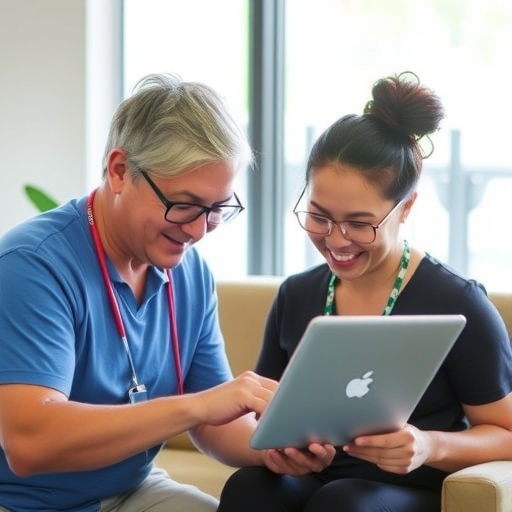A Revolutionary Approach to Surgical Handover: Enhancing Patient Safety through the ‘Sickest Patients First’ Protocol
In the ever-evolving landscape of surgical care, communication during shift changes remains a critical juncture that profoundly influences patient outcomes. The recently presented study at the American College of Surgeons Clinical Congress 2025 introduces a novel handover system—termed the Sickest Patients First Surgical (SIPS) handover—that promises to reshape surgical team dynamics and patient monitoring protocols in operating theaters and surgical wards alike.
Traditional surgical handover procedures often fall short in prioritizing patients with the most urgent clinical needs, inadvertently contributing to delayed interventions and adverse events. Recognizing these pitfalls, the SIPS system strategically reorganizes handover sequences by placing patients with the highest acuity at the forefront, ensuring that critical cases receive immediate attention from incoming surgical teams. This patient-first prioritization is anchored in the classic ISBAR communication framework—Introduction, Situation, Background, Assessment, Recommendation—augmented here to emphasize clinical urgency.
The efficacy of SIPS was evaluated in a comprehensive cohort study, which meticulously tracked handover quality, patient physiological parameters, and the perceptions of healthcare staff over extended surgical shifts. Notably, the investigators implemented the system without extending the duration of handover meetings, a significant consideration given the time-pressured environment of surgical units. The findings underscore a marked improvement in the accuracy and completeness of information transfer, fostering a shared mental model among multidisciplinary team members.
From a physiologic standpoint, the study documented tangible benefits, including enhanced patient stability immediately post-handover. Parameters such as heart rate variability, oxygen saturation trends, and hemodynamic indices showed favorable modulation, suggesting that timely and focused communication can have downstream effects on patient physiology. These objective measures endorse the system’s role not only as a cognitive aid but as an intervention that tangibly improves patient safety metrics.
Equally compelling is the positive feedback from surgical staff. Through structured surveys and qualitative interviews, participants reported heightened confidence in clinical decision-making during transitions, a reduction in communication-related errors, and a strengthened culture of safety. The SIPS model appears to empower clinicians, fostering teamwork and vigilance that permeate subsequent patient interactions and care planning.
One of the remarkable achievements of the SIPS protocol is its seamless integration into existing workflow patterns. Implementers avoided any prolongation of handover sessions, alleviating typical concerns about added administrative burden. The study authors attribute this efficiency to the protocol’s structured, bullet-point style communication that distills complex patient data into prioritized, actionable information rapidly consumable by incoming teams.
This study’s design leveraged a longitudinal cohort methodology, enabling granular observation of both immediate and longitudinal impacts of SIPS deployment. Such an approach lends robust credibility to the findings, transcending anecdotal evidence and situating the model within evidence-based clinical practice. The statistical rigor, combined with real-world application, positions SIPS as a scalable innovation with potential for widespread adoption.
While communication tools and protocols exist in myriad forms, many have shown limitations in dynamic, high-stressor surgical environments. The innovation here lies not simply in adopting ISBAR but in adapting it with a clinical prioritization lens that dynamically orders patients by acuity. This approach addresses a fundamental challenge inherent in surgical workflows—balancing comprehensive review with urgency triage—thereby mitigating risks posed by overlooked critical cases.
The dissemination of these findings via JAMA Network Open amplifies their accessibility to the global medical community, encouraging dialogue, replication, and refinement. Open-access availability ensures that institutions worldwide, from academic medical centers to community hospitals, can incorporate insights from this study into their surgical governance frameworks.
Future research directions emerging from this study may explore automation and digital augmentation of SIPS protocols, potentially integrating real-time data analytics and electronic health record systems to streamline the prioritization process further. Such innovations could extend the model’s efficacy, marrying human judgment with artificial intelligence to enhance predictive capacity and response timeliness.
In a healthcare era increasingly focused on patient safety, workflow optimization, and interdisciplinary collaboration, the SIPS surgical handover system represents a compelling advancement. It not only bridges communication gaps but actively transforms them into mechanisms that enhance vigilance and care quality, marking a paradigm shift in perioperative patient management.
The study is spearheaded by Jessica M. Ryan, MB, whose correspondence can be reached via email at [email protected]. Detailed disclosures, author contributions, and funding sources are outlined within the full publication accessible through the JAMA Network Open portal, offering transparency and a foundation for academic discourse.
As surgical teams globally strive for error minimization and outcome optimization, the SIPS approach stands out as a replicable, evidence-supported strategy. Implementing sickest patients first ensures that the patients who need it most are prioritized, setting a new standard in surgical handover protocols that could dramatically enhance patient safety and staff efficacy in operating rooms worldwide.
Subject of Research:
Article Title:
News Publication Date:
Web References:
References:
Image Credits:
Tags: adverse events in surgeryhealthcare staff perceptionsISBAR communication frameworkpatient monitoring protocolspatient physiology trackingpatient safety in surgerySickest Patients First protocolsurgical care innovationssurgical handover systemsurgical shift changessurgical team communicationurgent clinical needs prioritization





